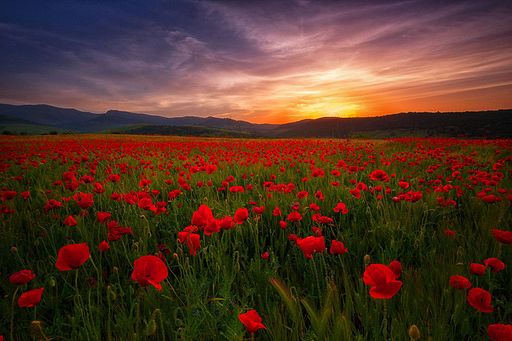Lest We Forget
In western societies, placing flowers at grave sites goes back to the ancient Greeks and Romans, and even before, to the stone age, as archaeologists discovered not long ago. Since then, as Jews and Muslims have asserted their own cultural and religious preferences for honoring the dead, the tradition of remembering with flowers has remained mostly a Christian one in the west. There is an entire symbolism of flowers dating from the ancient Greek and Roman mythologists and carried on by Christians, but it’s a safe bet to guess most people pay little attention to such subtleties when picking out a specific flower or an arrangement of flowers to place at the grave of their loved one. Most likely they pick out something they themselves enjoy, or that they know was a favorite of the departed.

Common poppies blooming in May 2015 in Guelma, a district in northeastern Algeria. Photo by Yaco24.
It is worth noting that the opium poppy, Papaver somniferum, is native to the Mediterranean region and the Near East and yields opiates such as morphine, named for Morpheus, the god of dreams. Opium poppies were well known to the ancients for their anesthetic properties, a blessed relief for those wounded in battle or near death. It’s flower is not a symbolic reminder like the red poppy of those lost to the violence of war, but its value in easing suffering and bringing on the forgetfulness of sleep to those maimed and agonized by that violence makes it more important to those poor unfortunates, and certainly more useful. Rest in peace.
— Izzy 


